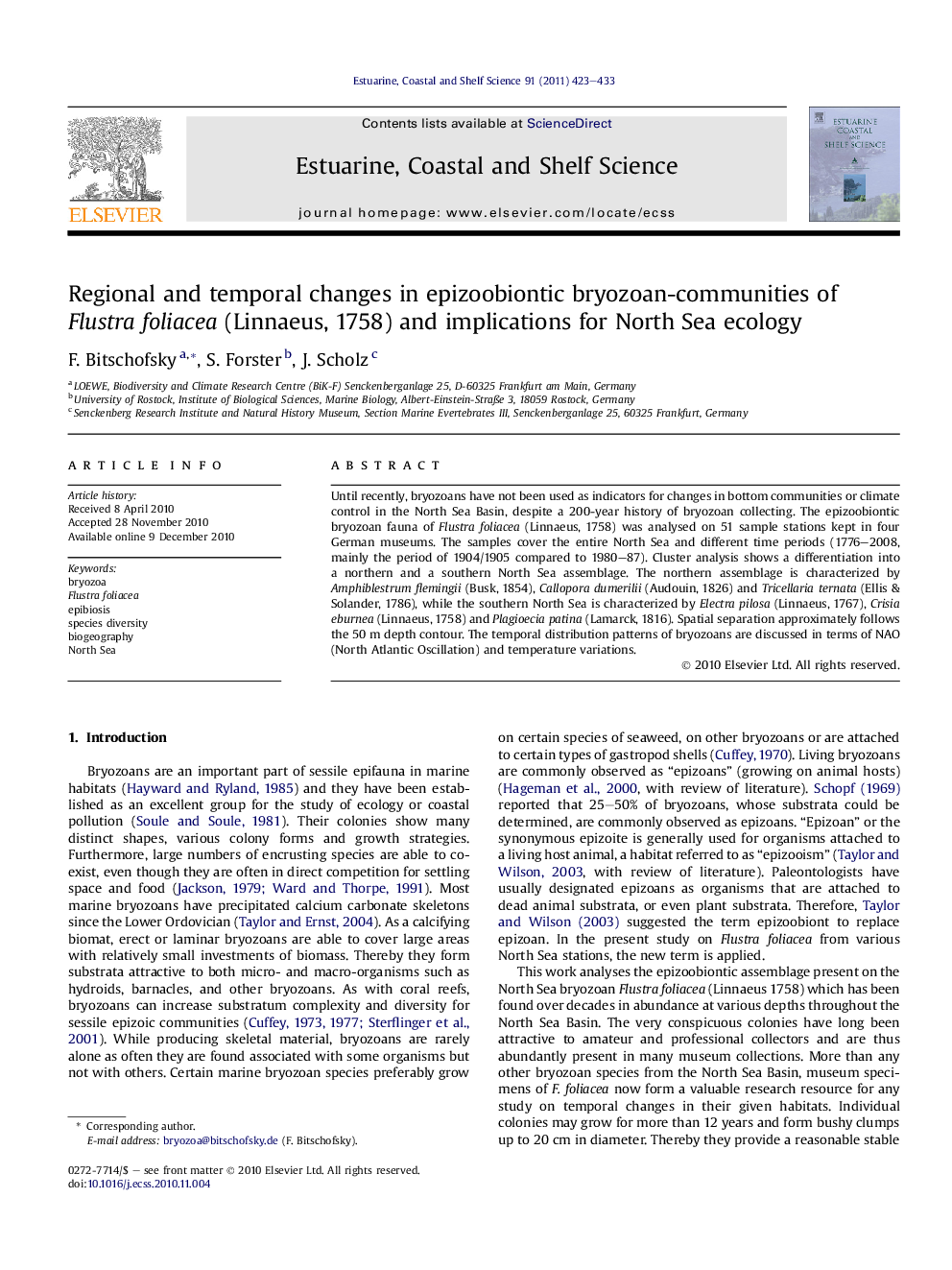| Article ID | Journal | Published Year | Pages | File Type |
|---|---|---|---|---|
| 4540636 | Estuarine, Coastal and Shelf Science | 2011 | 11 Pages |
Until recently, bryozoans have not been used as indicators for changes in bottom communities or climate control in the North Sea Basin, despite a 200-year history of bryozoan collecting. The epizoobiontic bryozoan fauna of Flustra foliacea (Linnaeus, 1758) was analysed on 51 sample stations kept in four German museums. The samples cover the entire North Sea and different time periods (1776–2008, mainly the period of 1904/1905 compared to 1980–87). Cluster analysis shows a differentiation into a northern and a southern North Sea assemblage. The northern assemblage is characterized by Amphiblestrum flemingii (Busk, 1854), Callopora dumerilii (Audouin, 1826) and Tricellaria ternata (Ellis & Solander, 1786), while the southern North Sea is characterized by Electra pilosa (Linnaeus, 1767), Crisia eburnea (Linnaeus, 1758) and Plagioecia patina (Lamarck, 1816). Spatial separation approximately follows the 50 m depth contour. The temporal distribution patterns of bryozoans are discussed in terms of NAO (North Atlantic Oscillation) and temperature variations.
Research highlights► Epizoobiontic bryozans on Flustra foliacea from entire North Sea were analysed. ► Bryozoan community show differentiation in northern and southern North Sea assemblages. ► Spatial separation of bryozoan assemblages follows 50 m depth contour. ► Temporal changes in terms of NAO are discussed.
